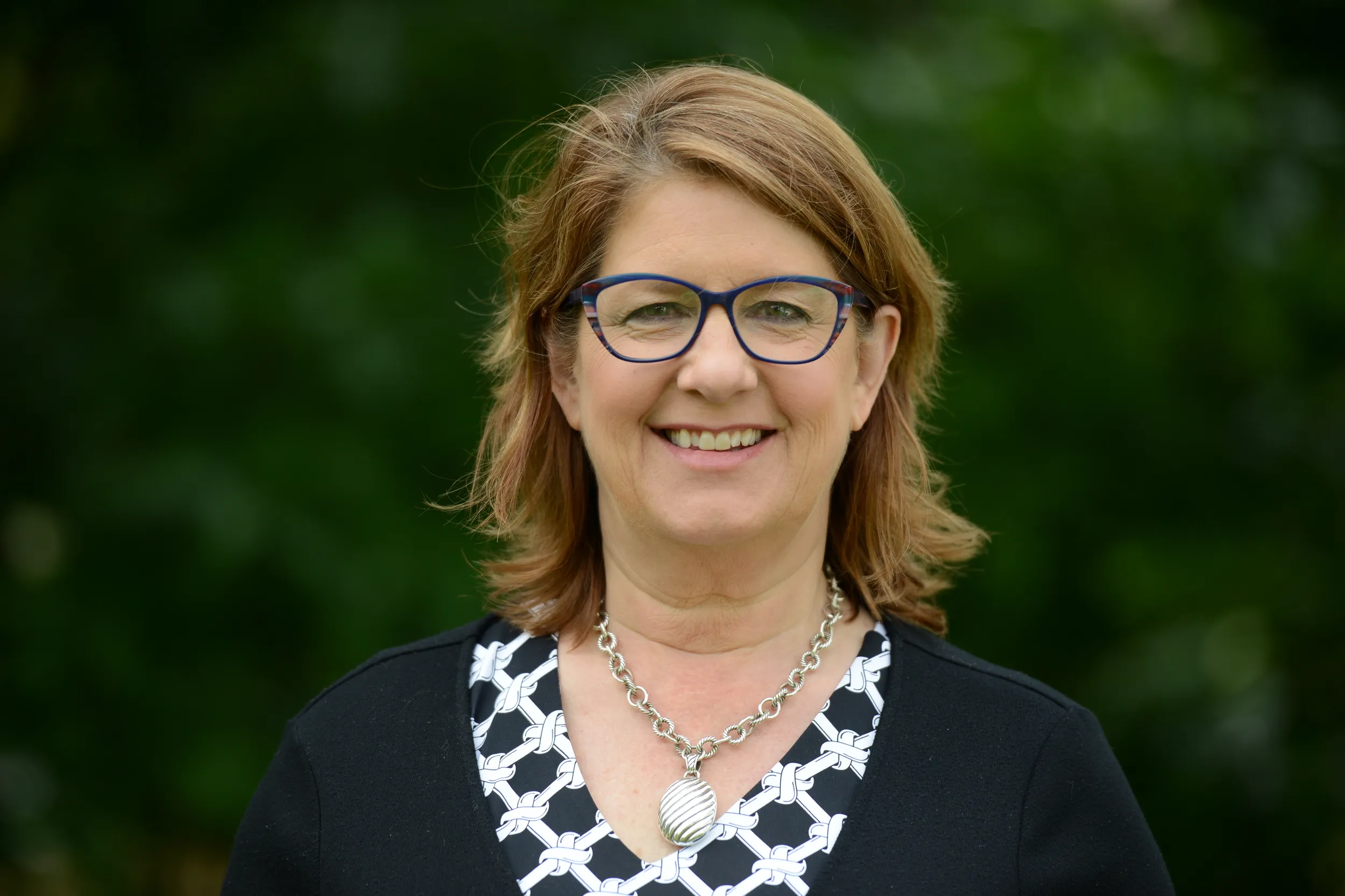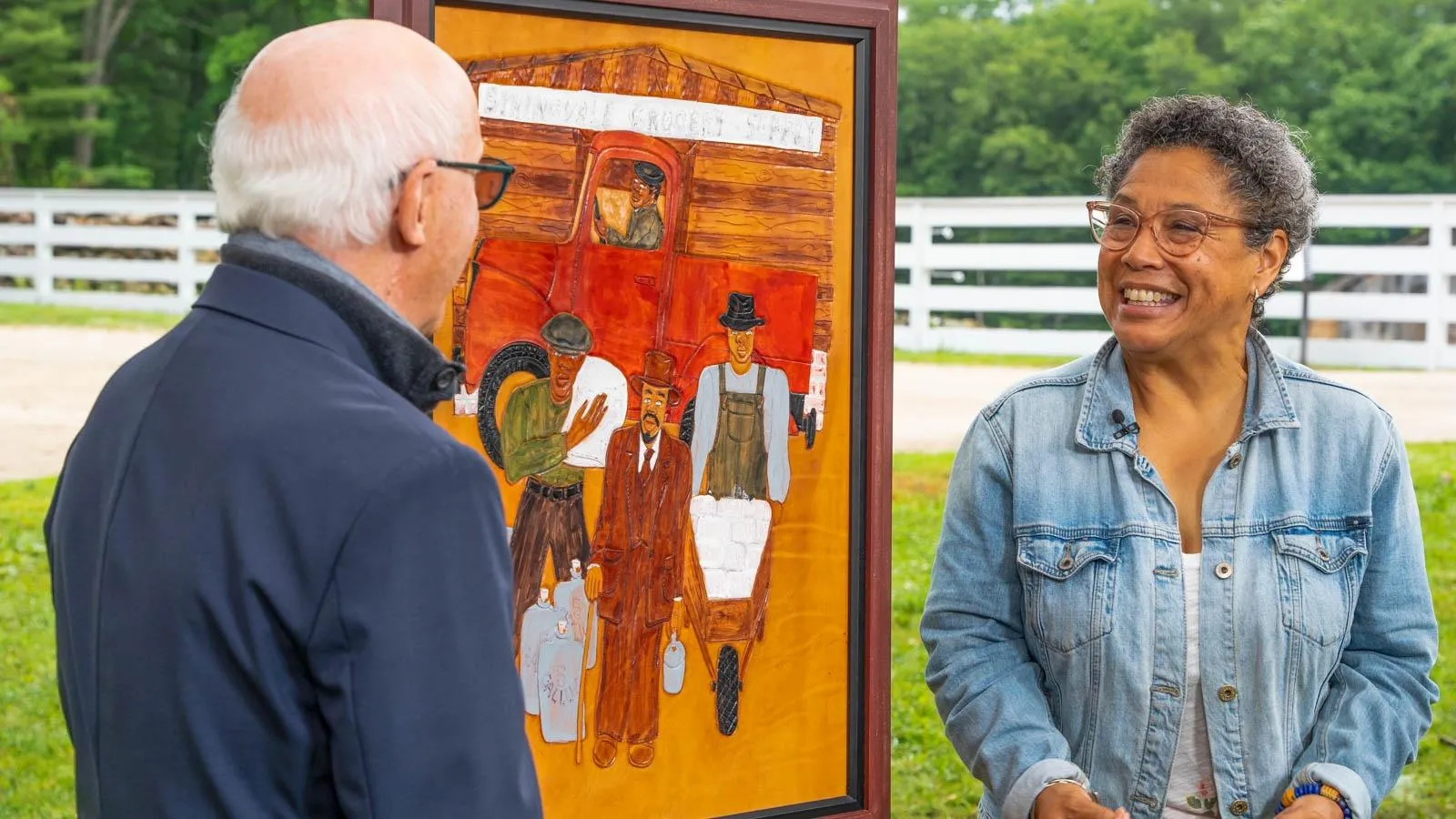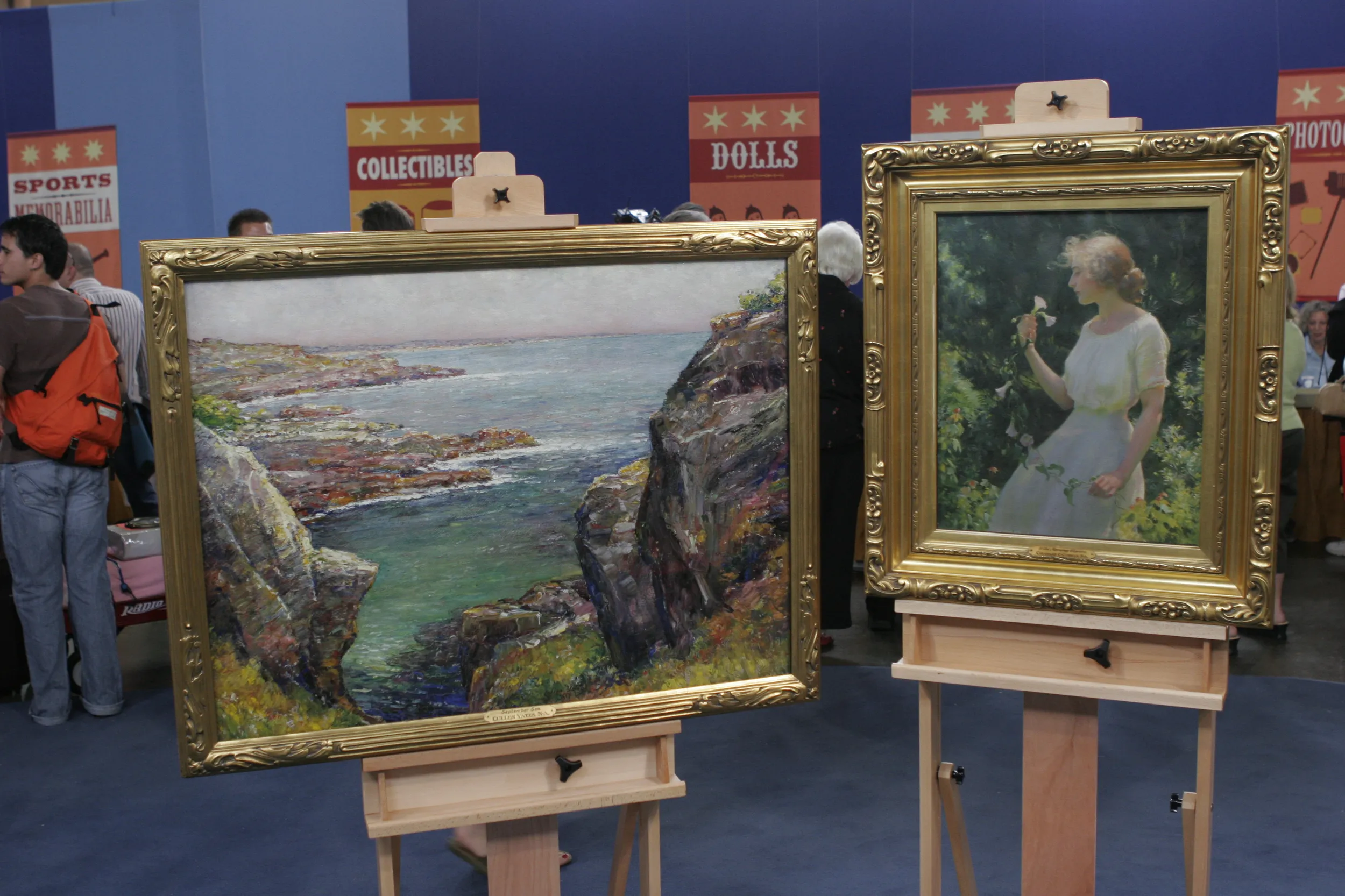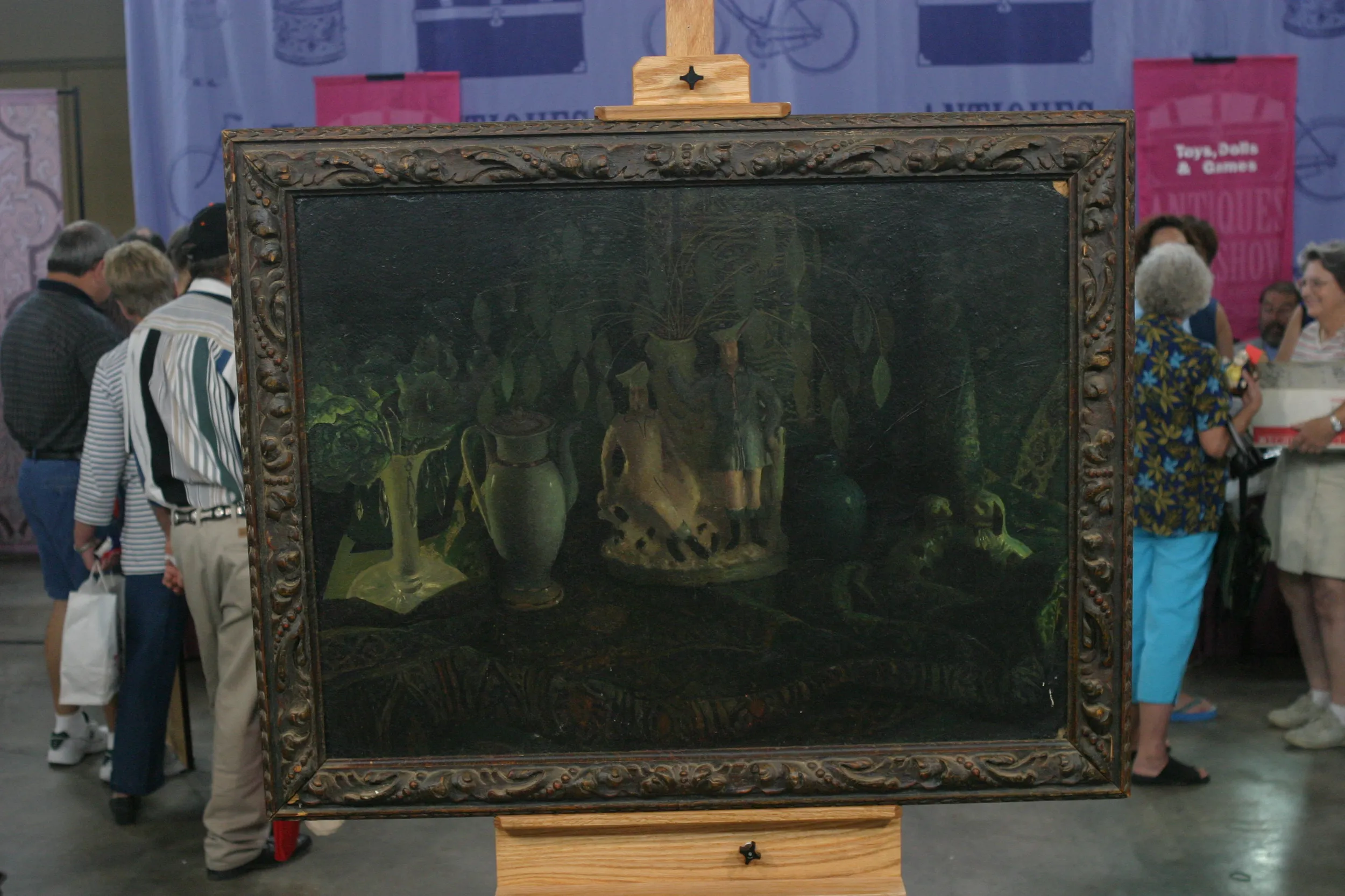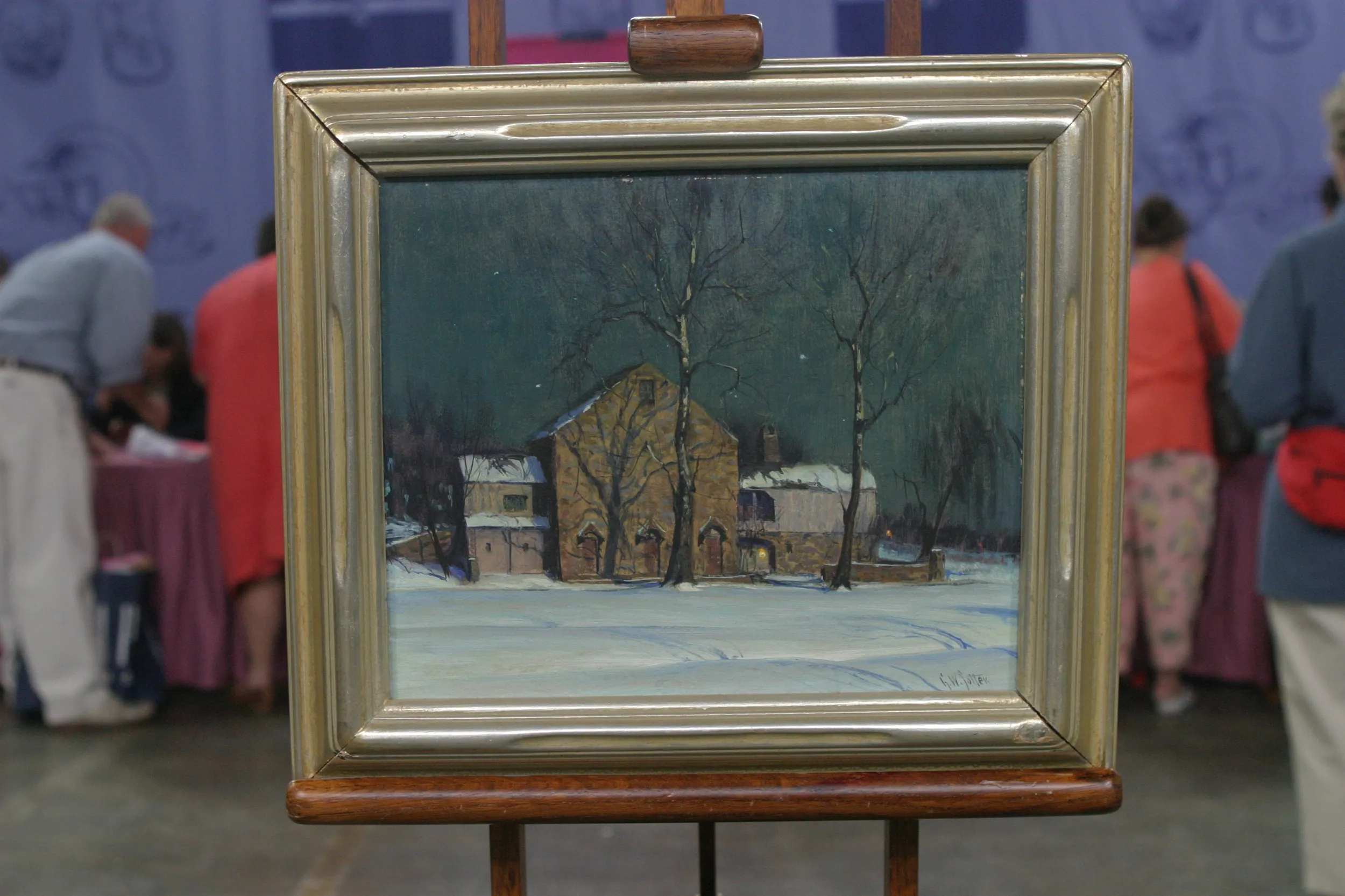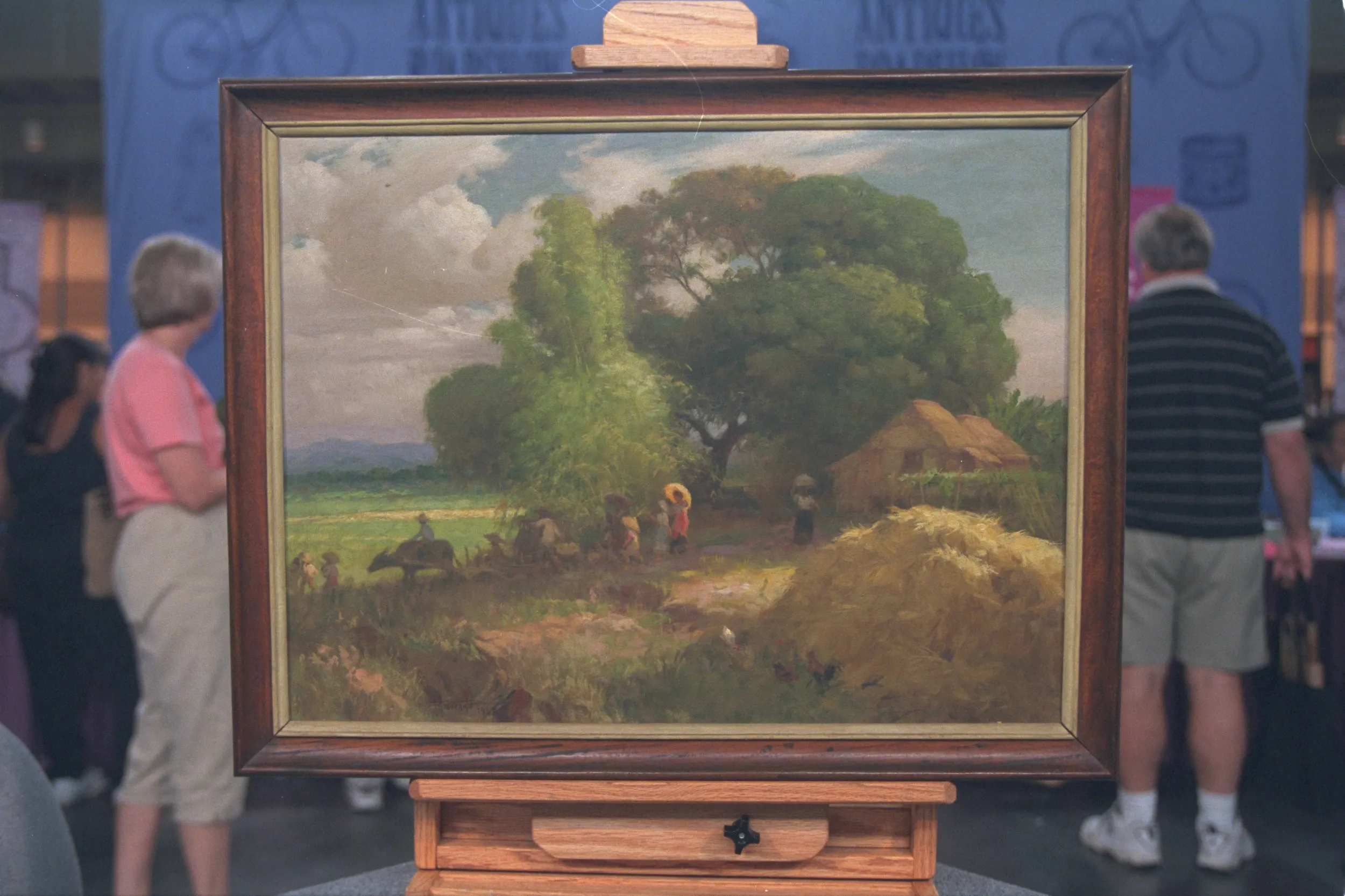GUEST: It's my mom, painted when she was four years old by an artist named Adelaide Chase from Boston. What I heard growing up was, everybody in Boston had their portraits painted by Adelaide Chase at one period in time. We have a portrait of her mother, and, um, on my dad's side, two portraits, yeah.
APPPRAISER: Also painted by her.
GUEST: Yes, right.
APPRAISER: So there are four in the whole family.
GUEST: Yeah.
APPRAISER: That's, that's really kind of amazing.
GUEST: Yeah, yeah. Two sides of the family.
APPRAISER: Yeah. She was a very important society painter in Boston...
GUEST: Yeah, yeah.
APPRAISER: ...uh, in the early 20th century. Uh, she was born in 1868 in Boston, and she was born into a very artistic family.
GUEST: Right.
APPRAISER: Her mother was a pianist.
GUEST: Right.
APPRAISER: Her dad, uh, J. Foxcroft Cole, was a painter...
GUEST: Right.
APPRAISER: ...and was her first unofficial teacher. Purportedly, as a child, she posed for Winslow Homer, who was a friend of Cole's.
GUEST: Yes.
APPRAISER: So from a very early age, she was just surrounded by art and music.
GUEST: Yeah.
APPRAISER: And in Boston at the end of the 19th century, you wanted to train with Frank Benson...
GUEST: Yup.
APPRAISER: ...and Edmund Tarbell.
GUEST: Mm-hmm.
APPRAISER: And she trained with them both at the Boston Museum School.
GUEST: Right.
APPRAISER: And then, as many Boston painters did, uh, she went off to, uh, Paris and the Académie Julian, and got experience there. And she came back to be one of the preeminent portrait painters in Boston, as you said.
GUEST: Yeah.
APPRAISER: One of the things I really love about her is, uh, she got married in 1892 to William Chester Chase. You thought I was going to say William Merritt Chase, the painter, but no. (chuckles) William Chester Chase, who was an architect.
GUEST: Right.
APPRAISER: But he, too, was in the arts. And so even though she got married, she continued to work as a married woman...
GUEST: Right.
APPRAISER: ...throughout her career.
GUEST: Mm-hmm.
APPRAISER: And that was very unusual at the time. And the style is very Boston School.
GUEST: Uh-huh.
APPRAISER: It's, it's exactly the sort of American Impressionist approach. A slightly more subtle palette than some of the other artists at the time.
GUEST: Yeah, yeah.
APPRAISER: But still clearly impressionistic and just beautifully captured textures in clothing, in objects, in flesh. And that's why she was so sought after. I have to ask...
GUEST: Uh-huh.
APPRAISER: Do you still have the doll?
GUEST: I do have the doll!
APPRAISER: You do? It's still in the family?
GUEST: (laughs): Yes, yes. (exclaims) Yeah.
APPRAISER: The other thing we should talk about, since we're talking Boston...
GUEST: Mm-hmm.
APPRAISER: ....is this wonderful, uh, carved frame.
GUEST: Oh.
APPRAISER: So when we look at the back, it's actually signed "Thulin, 1932." When was the portrait done?
GUEST: Well, she was four, I think she was four, which would have been 1931, but, yeah.
APPRAISER: So that, that works.
GUEST: Yeah, yeah.
APPRAISER: So Thulin was a very important frame maker. In Boston, around 1903...
GUEST: Uh-huh.
APPRAISER: ...an artist by the name Hermann Dudley Murphy joined together with Walfred Thulin, as well as Charles Prendergast, to make a frame shop.
GUEST: Oh, uh-huh.
APPRAISER: And they created these beautiful hand-carved frames that are very valuable in and of their own right.
GUEST: Oh, gee, uh-huh.
APPRAISER: And, not that you would ever want to separate it, because it's, it's...
GUEST: Right.
APPRAISER: ...the quintessential Boston package.
GUEST: Mm-hmm.
APPRAISER: I know you would never sell your mother.
GUEST: Right.
(both laugh)
APPRAISER: Never!
GUEST: No, in my younger years, maybe, but not, not at this point. (laughs)
APPRAISER: So for insurance purposes, I'd insure it for $32,000.
GUEST: No, sir!
APPRAISER: Yes, sir! (laughs)
GUEST: Jeesum Crow! (laughs)
APPRAISER: You knew your mom was a winner.
GUEST: (laughs): Yeah. Gee, she did always say she was, so...
APPRAISER: (laughs)
